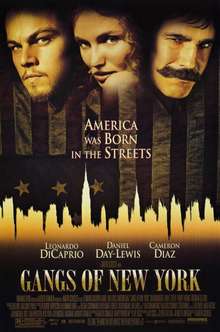What is it about one-eyed villains that make them so intimidating? Maybe it has to do with their connection to the brutal and merciless pirates who often wore eyepatches (although not necessarily because their eye was damaged). While there have been many protagonists who have also sported the one-eye motif, it merely enforces the fierce and unstoppable stereotype. Even if most of these characters wear eye patches to cover their damaged eye, the antagonists who go without them end up being that much more intimidating. It’s almost like they wear their defective vision as a badge of honor, showing that it will take much more than a simple flesh wound to stop them from whatever they put their mind to. Perhaps these villains are a metaphor for the singular vision they hold, staying focused on one thing and one thing only. This week’s two films feature one-eyed villains.
Casino Royale
Year: 2006
Rating: PG-13
Length: 144 minutes / 2.4 hours
I would be amiss if I did not mention one of the most iconic one-eyed villains ever: Ernst Stavro Blofeld. This villain was not only a key antagonist of the James Bond series, but he has created several tropes as well, the most notable parody of him being Dr. Evil (Michael Myers) from the Austin Powers series. Despite his damaged eye only appearing in a few films, Blofeld as a villain appeared in From Russia with Love (1963), Thunderball (1965), You Only Live Twice (1967), On Her Majesty’s Secret Service (1969), Diamonds Are Forever (1971), For Your Eyes Only (1981), and Spectre (2015). The latter of these films actually shows the incident where he loses his eye, mainly because Daniel Craig James Bond films are seen as a prequel series. Of course, before they got to Blofeld, there was Le Chiffre in Casino Royale (2006).
Le Chiffre (Mads Mikkelsen) earned his considerable wealth through several underhanded dealings in the underworld. From funding terrorism to insider trading, eventually, the leadership of MI6 takes notice. After unknowingly foiling a short-sell strategy Le Chiffre was using to fund a Ugandan warlord, James Bond (Daniel Craig) is sent to Montenegro to participate in a high-stakes Texas hold ‘em tournament that Le Chiffre decided to put on to recoup his losses. In terms of poker faces, Le Chiffre has one of the better ones, even despite having haemolacria in his left eye, which causes him to cry blood. After losing a significant amount of money to Bond, Le Chiffre eventually captures the British secret agent and tries to torture the bank account numbers out of him, but to no avail. When the rescue party comes to get Bond, Le Chiffre is killed in the process. However, his influences within MI6 start to show well after his death.
Gangs of New York
Year: 2002
Rating: R
Length: 167 minutes / 2.78 hours
While wearing an eyepatch can give an intimidation factor to a character, I’ve found the most interesting characters are the ones who are hiding something underneath that small piece of fabric. From the protagonist of Nick Fury (Samuel L. Jackson) from the Marvel Cinematic Universe to the antagonist of King Bradley from Fullmetal Alchemist, their patches covered up the secrets emblazoned on their eyes. I almost wish there were more characters like this. When it comes to replacing a damaged eye, filling it with a symbol creates a character with a lot more depth than just someone who happens to be wearing an eyepatch. In fact, the best example of a character like this is none other than “Bill the Butcher” from Gangs of New York (2002). He has nothing to hide except his almost insane devotion to his country, and he wears it with pride on his left eye.
William “Bill the Butcher” Cutting (Daniel Day-Lewis) leads a group of Americans who call themselves “The Natives” in a gang war against a recent influx of Irish immigrants in the area of Lower Manhattan known as “Five Points.” He is fiercely nationalistic, even to the point of having a glass eye emblazoned with an American eagle set in his left eye socket. Despite having killed Priest Vallon (Liam Neeson), the leader of the “Dead Rabbits,” 16 years ago, Bill finds that some of the Irish immigrants start to get out of line again when a man merely known as Amsterdam (Leonardo DiCaprio) arrives in New York. Eventually, Bill learns Amsterdam is the son of Priest Vallon, and the cycle of gang wars reaches its climax once again, but this time with a much different outcome for Bill than the one that happened years ago.
2 sum it up: 2 films, 2 vision-impaired villains

